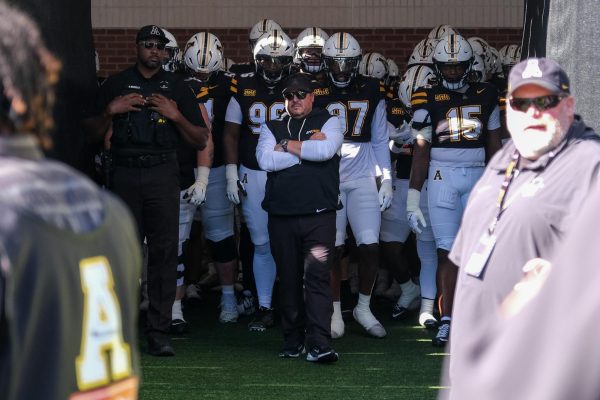OPINION: Military recruitment doesn’t belong on campus
September 9, 2021
There is an entrance that is often surrounded by signs and posters for the Armed Forces near the Roess Dining Hall. It attracts the eye, and you can’t help but look at them when passing by. These signs are advertising a recruitment office in the varsity gym, directly in the heart of campus.
Recruitment through education systems is an old practice. In 1917, the Selective Service Act expanded the draft from 21 to 18 years old. Since then, the military has focused on recruiting high school and college students. As of 2018, 56% of new recruits are high school graduates with an additional 30% being college students. That’s a huge amount of recruits built by mostly young Americans.
This is not necessarily surprising, neuroscience tells us that teenagers are more likely to engage in risky and impulsive behavior. The prefrontal cortex, the part of the brain responsible for decision making, doesn’t finish maturing till age 25. Young people are less likely to think of the long term effects and consequences of their actions because the young brain isn’t fully developed.
Additionally, the military overwhelmingly targets lower income students, offering benefits and free schooling. A study conducted in 2012 focused on two schools in Connecticut, one being a lower income school and the other being a private high income school. Military recruiters visited the lower income school almost ten times more. Much of our new fighting forces come from financially challenged young adults, and it’s recruitment offices like the one on our campus that do much of that work.
Recent events in American foreign policy have made these kinds of statistics and displays start to have a bad taste. Afghanistan has nearly been completely taken over by the Taliban. A country that the United States has been attempting to “rebuild” for 20 years. There are 800,000 service members in Afghanistan, 200,000 were wounded and 2,352 soldiers died.
The tragedy, the war in Afghanistan, was seemingly all for nothing. The focus of our presence there was to train a new army and government to make sure that a militant group could not take over. However, seeing the state of the country now, that plan has seemingly failed.
So how many young men and women died for no reason? It’s a harsh question we must ask ourselves. How many joined right out of high school? How many joined for free tuition? How many of those dead were brought in by a recruitment office on their campus? How many could have been brought in by our very office, right here at App State? These thoughts come up when passing those signs.
This is not to say that joining the military can’t be a worthwhile life experience and career. However, military recruitment should not have a place in an institution for learning. The image shown for recruitment and the promises given do not always reflect the harsh reality of military life. It’s doubtful that recruiters will ever put up a sign in front of the varsity gym for the hundreds that died in the Middle East.
Chances are the recruitment office is not going away, and maybe it shouldn’t. But we should all be more considerate of the ugly blemishes and failures that the U.S. Armed Forces carries with them. Especially next time we pass one of those signs.













Alan Harris • Sep 15, 2021 at 1:06 pm
It is probably unintentional, but to say that 56% of those who join the Army are high school graduates somehow correlates to age is misleading. A 27 year old man can also be a high school graduate….
Jeremy Smith • Sep 15, 2021 at 12:01 pm
As this is an opinion article, I appreciate your concern for the well being of the younger generation. However, the harsh reality of the freedoms we enjoy rely on the these volunteers to enlist in the military. It is far too easy to forget that we have the luxury to choose, unlike many countries with mandatory conscription. I would argue that the education system is extremely predatory and misleading with the promise of guaranteed success in order to secure the student’s tuition. So, in terms of compensation for education and even the employment benefits, of course lower income families will accept the risks of military life in hopes for financial stability that higher income families enjoy. As for recruitment efforts on campuses, please realize that government assistance helps many education programs and students without obligations to serve. Political decisions are what moves the U.S. Armed Forces and many students rely on those same political figures to continue their financial aid. My opinion is the recruitment offices are necessary when understanding the larger picture in regards to the rights and priviliges we are afforded in the United States.